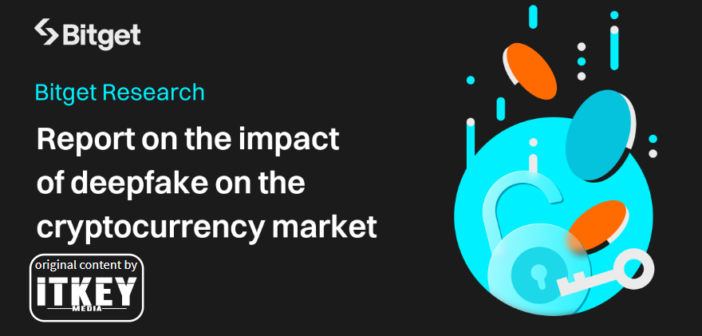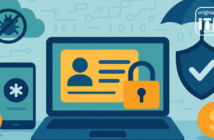- Bitget released its report about the impact of deepfakes on the crypto market and possible ways to confront it
- The use of AI for scams is booming as the development of relevant regulative means to address it is lagging behind
- In this situation, the most available solution is massive effort on raising public awareness of the issue
This July, Bitget – one of world’s leading crypto exchanges and web3 companies – has published its report on the current state and the impact of deepfake on the cryptocurrency market and how to protect yourself. The report describes the fraudsters’ methods and suggests ways and tools for confronting them.
Bitget was founded in 2018 and secured its place among the world’s leaders in the crypto and web3 spaces. Its clientele of 25+ million users worldwide get an opportunity to trade more efficiently. Bitget’s flagship offerings are its pioneering copy trading feature – where users can literally follow the footsteps of successful bloggers – and Bitget Wallet – a multifunctional wallet solution that combines such Web3 features as wallet functionality, swap, NFT marketplace, and DApp browser. The provider prides itself on the highest security standards.
Why Research Deepfakes and Crypto
Bitget Research is the company’s division that specializes in market reports covering critical or undercovered topics. These reports encompass cryptocurrency market performance, trends, local market insights, innovations, and comprehensive financial overviews. For example, on July 8th Bitget Research released a report on Japan’s growing crypto market.
The idea of researching the impact of deepfakes on the crypto market emerged after Bitget started observing the growing trend of deepfake-related frauds and wanted to spread awareness about this for users’ security.

Maciej Jankowski, Marketing Manager at Bitget
‘When deepfake technology first emerged, it flew under the radar — mostly used for harmless experiments and entertainment. People didn’t see it as a big threat at first. Besides, there wasn’t enough solid data showing how deepfakes could result in humongous scams. Instead, the focus was on other types of frauds and scams that were blooming. So, while deepfakes were getting smarter and sneakier, the industry was a bit busy with other on-chain/off-chain hacks. People didn’t consider the external factors that may lead to loss of funds. Now, the industry recognizes deepfake scams and knows how to battle it with better verification techniques and broader awareness,’ Bitget’s marketing manager Maciej Jankowski shares.
Olga Voloshyna, Chairman of the Committee on IT and Cyber Security of the German-Ukrainian Chamber of Industry and Commerce, points out that the recent theft of USD 25M using deepfakes videos or the distribution of GoldPickaxe malware that uses AI to create deepfakes for invading bank accounts of iOS and Android users – all speak for the tendency of the ever increasing use of AI with ill intentions.
When deepfake scams could no longer be ignored, Bitget turned to its research team, who specifically analyze market trends, threats and provide insights into what can be expected. Bitget Research has been digging into crypto security for a long time, trying to figure out the best ways to tackle potential risks and develop measures, tools, and guidelines to combat fraud that involves deepfakes.
The Path to the Report
Typically, a market research project takes about a few months to collect data, analyze the information, check sources’ credibility, request additional data from partner companies, and utilize internal findings, either ready ones or through a separate instrument, for example, a survey. To provide a comprehensive analysis, the study included data from 2022 and forecasted trends for 24 months.
According to Mr Jankowski, one of the main challenges with the deepfake research was collecting accurate data in the rapidly evolving crypto market. Moreover, deepfake is a relatively new technology, and comprehensive data is still scarce. Keeping pace with its rapid development required constant learning and adaptation.
‘Our team had to sift through a massive volume of user reports, distinguishing genuine concerns from noise, and corroborating these with our own findings. We collaborated with experts in AI, cybersecurity, and blockchain, integrating insights from various sources to create a thorough and reliable report. Balancing the technical depth with making the report accessible to a broader audience was also a key challenge we had to overcome,’ Mr Jankowski tells ITKeyMedia.
As it has become clear that the market lacks the necessary defenses against sophisticated threats such as deepfake scams, at the same time the research of deepfake scams and their potential growth revealed that it was at an increasingly fast pace. The research team deployed a comprehensive, multi-source approach to detect and analyze deepfake-related activities, rooted in user reports and suspicions of illicit transactions involving deep fakes.
Application of Deepfakes
Some of the findings and insights revealed that deepfake technology was involved in clever marketing campaigns, influencer appearances, and pseudo-educational videos, and these are just a few ways to gain user attention and trust with the purpose of theft. The use of deepfake technology in cryptocurrency crimes has surged, with a whooping 245% increase in 2024 compared to 2023. Bitget Research forecasts that by 2026, up to 70% of fraud will involve this technology.
Pseudo-educational videos are a particularly curious example of deepfake scams. ‘Pseudo-educational videos may look like they’re teaching you something valuable, but in fact they’re quite deceptive. They’re cleverly designed to resemble genuine educational content – like tutorials or guides, but their main goal is to promote specific products, services, or ideas rather than inform the audience and provide objective information,’ Mr Jankowski explains.
In practice, these videos often promise easy money, offer shady investment tips disguised as solid financial advice, or encourage risky trading practices without really explaining the dangers. They put these reassuring words in the mouths of crafted copies of figures of authority or celebrities to make them believable and prey on trust in educational content to manipulate users into making financial decisions that can end up costing them dearly.
Rapid Evolution of Deepfakes
The Report also points out the volatility of deepfake-based attacks. Mr Jankowski lists the factors contributing to this volatility:
- Technological breakthroughs: As deepfake technology advances, it enables fraudsters to create more convincing and realistic fake content.
- Changes in public attitudes: Changes in how people perceive deepfakes influence their social impact. Increased awareness can lead to more cautious behavior in trusting potentially manipulated media.
- Emergence of new protective measures: Innovations in detection tools and strategies help to prevent and reduce deepfake threats. They can include algorithms that detect fake content and technologies like blockchain for verifying its authenticity.
- Changes in public awareness: When people are more informed about deepfake risks, they are better prepared to recognize and respond to potential threats.
- Legislative changes: New laws and regulations aimed at combating deepfake-related fraud, especially in sectors like cryptocurrency. These measures aim to protect users and eliminate deceptive practices.
Bitget’s Educational Effort
Raising public awareness is a top priority for Btget. In addition to research and reports, the company continuously runs educational campaigns with our partners, such as Slowmist, to support education on cryptocurrency security, like the June campaign ‘Anti-Scam Month’.
It was a proactive step aimed at combating cryptocurrency fraud and fostering safer practices among users. Beyond publishing research and guidelines, Bitget got hands-on by launching a social campaign in Vietnam. The company’s local team plans to place eye-catching banners in key public spots like bus stops, subways, and street billboards to educate people about secure cryptocurrency practices.

Gracy Chen, CEO at Bitget
‘Constantly monitoring the cryptocurrency industry, we see the growing use of deepfake technology for criminal purposes. Stopping this trend is extremely challenging, so the key elements are not only implementing detailed legal regulations and developing security technologies offered by exchanges, but also educating and raising user awareness to help them identify fraud attempts,’ Bitget’s CEO Gracy Chen underlines.
‘Our anti-scam campaign went beyond merely raising awareness; our goal is to empower users with the knowledge to recognize and avoid common crypto scams. Bitget collaborated closely with experts in AI, cybersecurity, and blockchain to ensure their educational efforts were not only effective but also aligned with the latest trends in fraud prevention,’ Mr Jankowski adds.
Looking ahead, Bitget plan to expand such initiatives further to increase public awareness about crypto scams, particularly among those who might be more susceptible to financial fraud.
The Possibility of a Legal Solution
According to the Report, regulatory intervention is necessary to curb increasing losses from deepfake-related fraud. This is for retail users’ protection which is extremely important even in a decentralized space such as crypto. It may involve implementing laws and guidelines that govern how emerging technologies are utilized and how the wider masses can detect such scams. For instance, regulations might mandate improved user verification processes on platforms, require transparent disclosures about risks associated with cryptocurrencies, and establish penalties for fraudulent activities.
It seems like the ideal solution would be a global effort on confronting deepfake-based cyber crime in the form of a harmonized legal framework for that. However, creating such a legal framework is challenging due to varying legal systems, technological capabilities, and cultural norms worldwide. While international cooperation exists, efforts often remain fragmented, with countries and companies addressing the issue independently.

Olga Voloshyna, Chairperson of the Committee on IT and Cyber Security of the German-Ukrainian Chamber of Industry and Commerce, CEO at Silvery LLC
‘The development of algorithms and solutions to reveal and counter deepfakes lags behind the spread a which untruthful information spreads, created with this technology. These issues demands top-priority handling on the state and legal levels, particularly the regulation of the use of AI tools. China has already taken steps in this direction and implemented new rules to limit AI algorithms that can generate images, voice, and text,’ Ms Voloshyna states.
Achieving a unified approach would require overcoming jurisdictional conflicts and ensuring consensus on cross-border standards and protocols. But – Bitget is convinced that regional and industry-specific initiatives can pave the way for broader international collaboration in the future, emphasizing the need for balanced global coordination alongside local adaptability to effectively combat evolving cyber threats.
In the meantime, Ms Voloshyna suggests that, seeing how the aforementioned process goes slowly and inefficiently at the moment, it’s up to the people to stay alert, be critical of the information that we consume, and never restrain from verifying information before spreading it.
You can read the full Report here.

Kostiantyn is a freelance writer from Crimea but based in Lviv. He loves writing about IT and high tech because those topics are always upbeat and he’s an inherent optimist!





